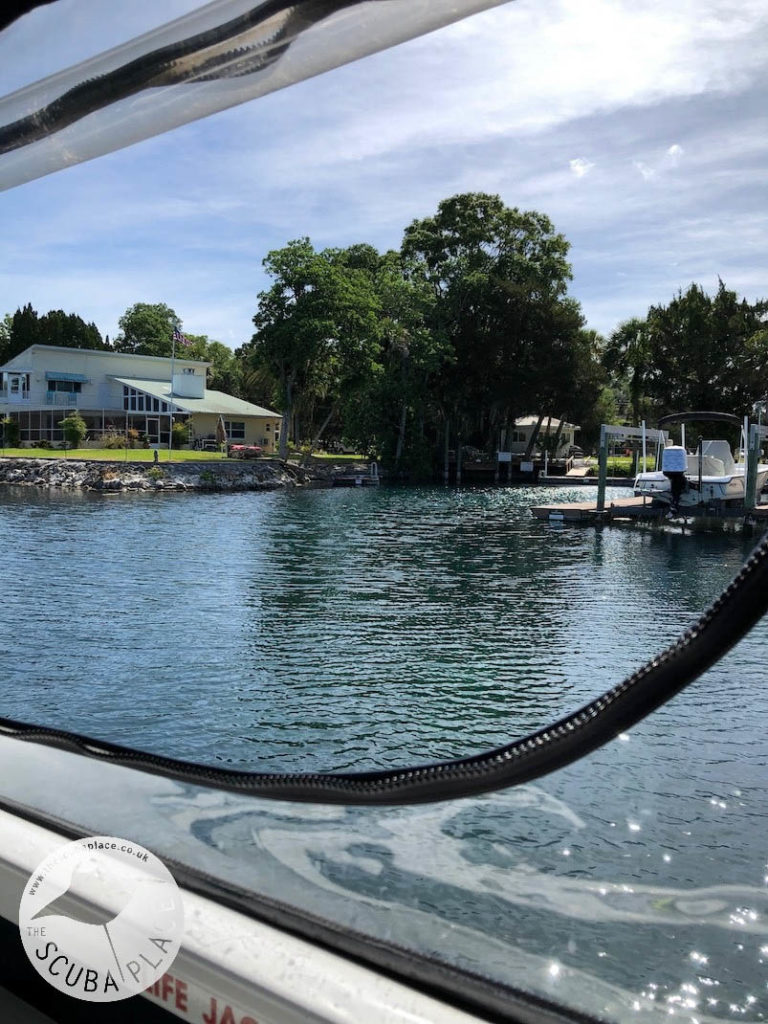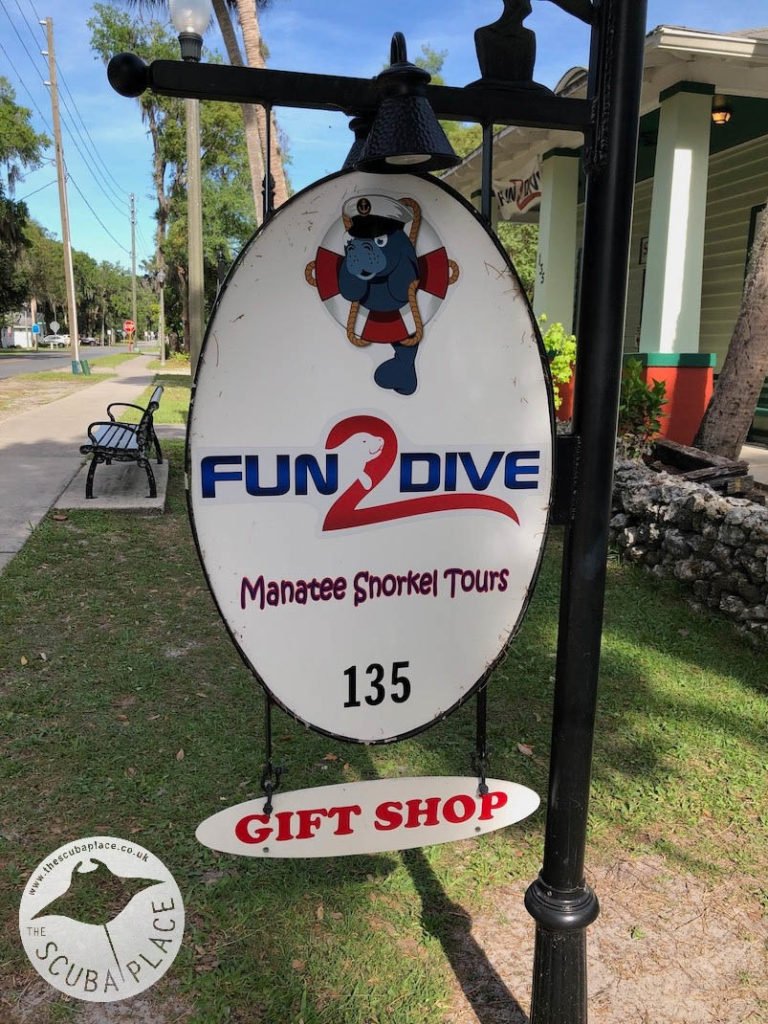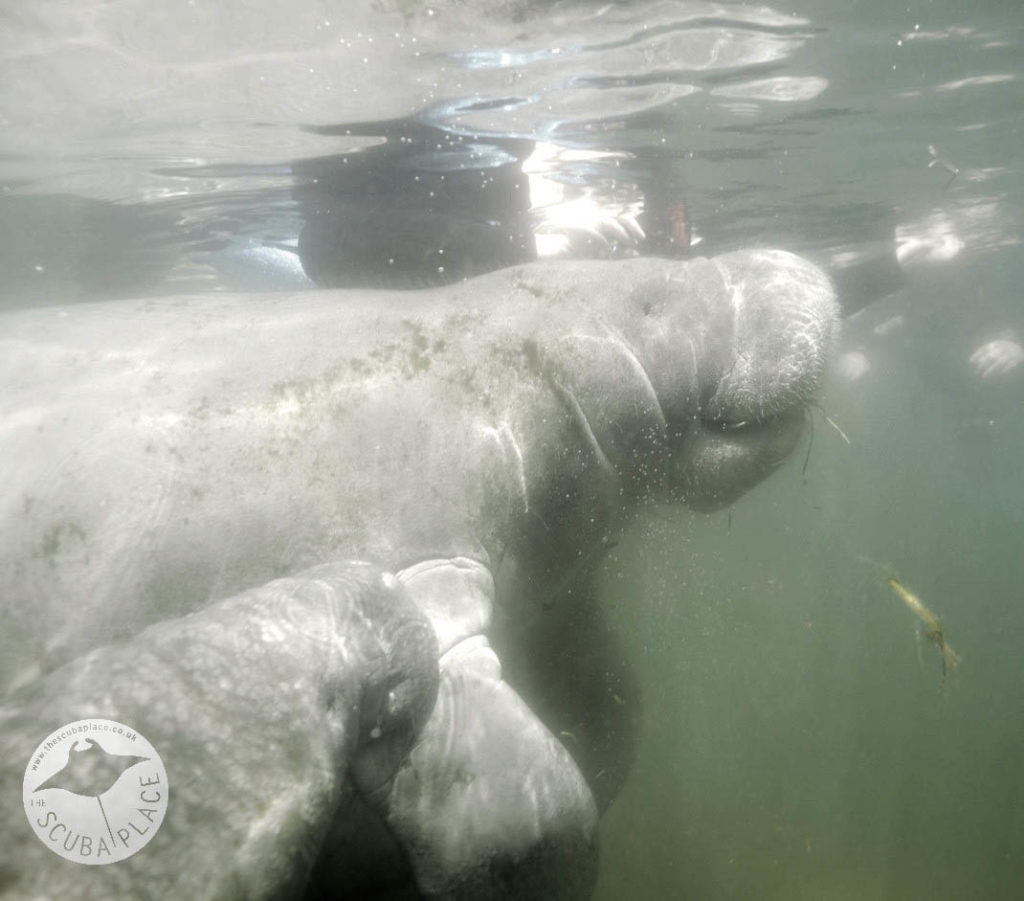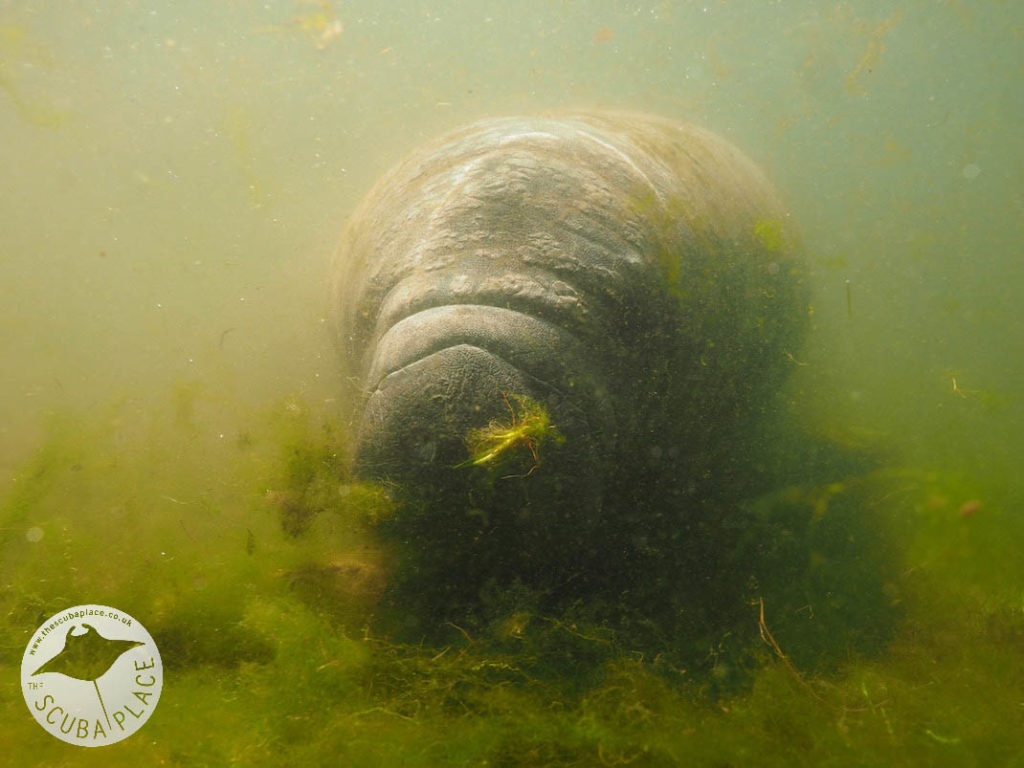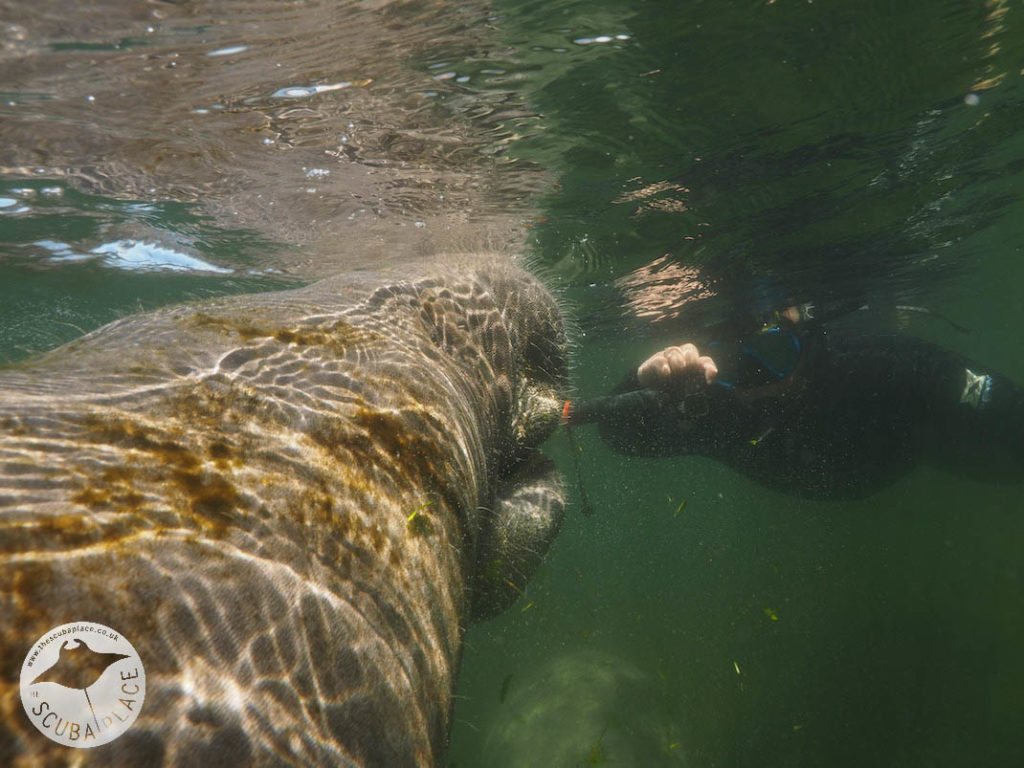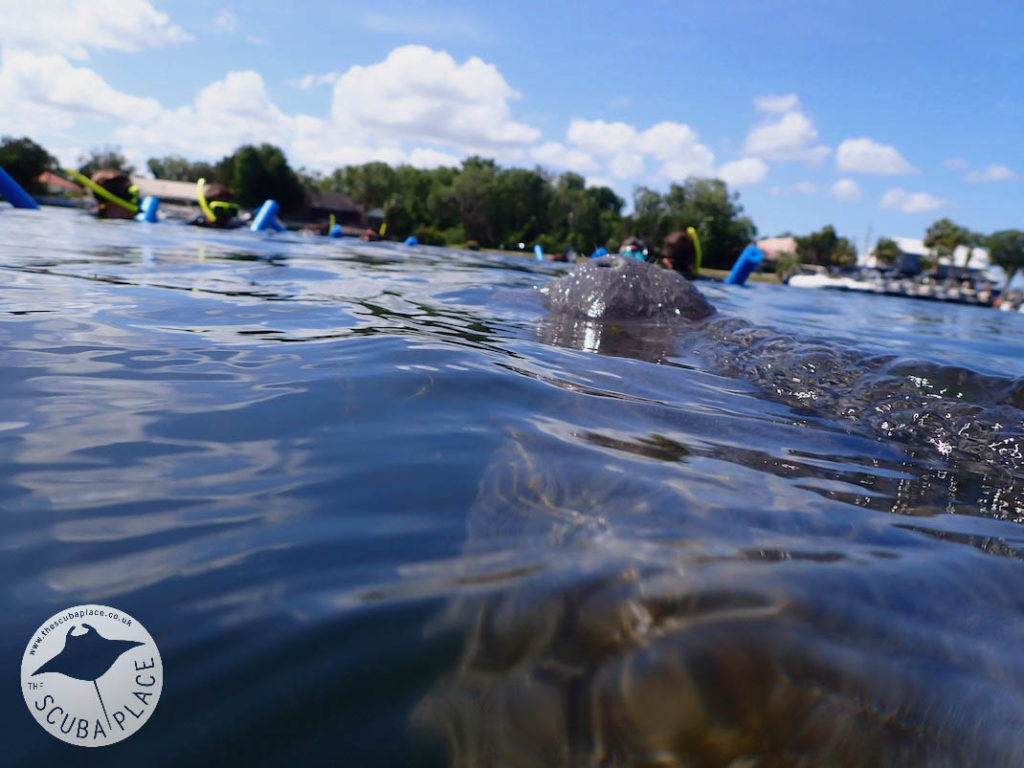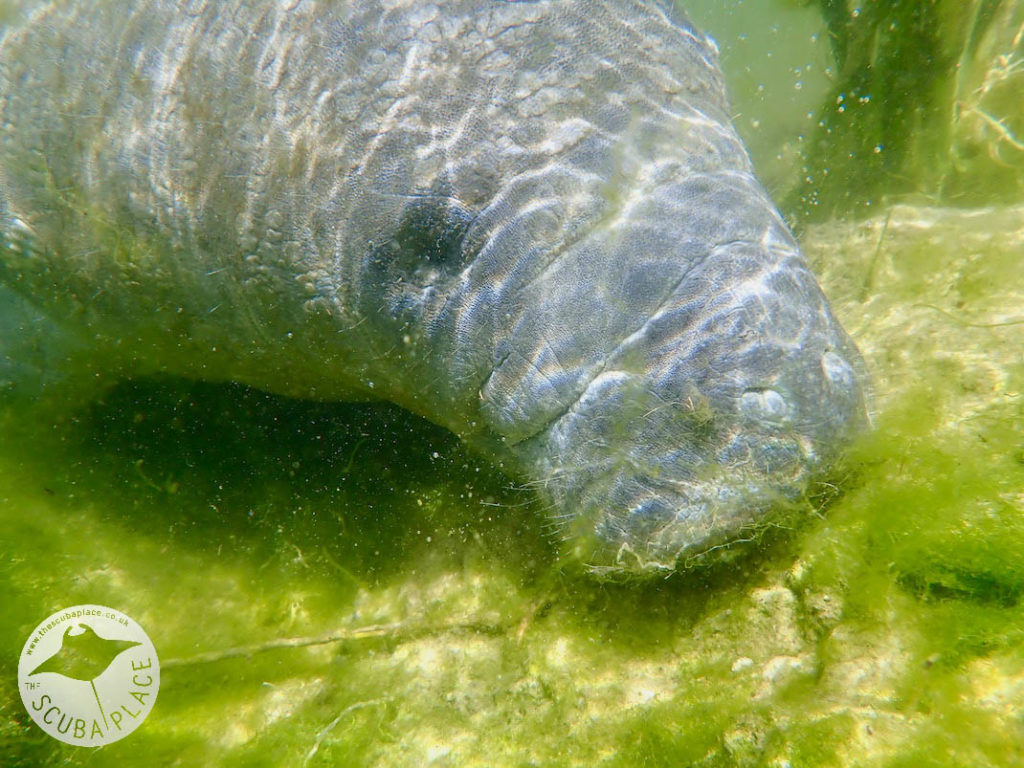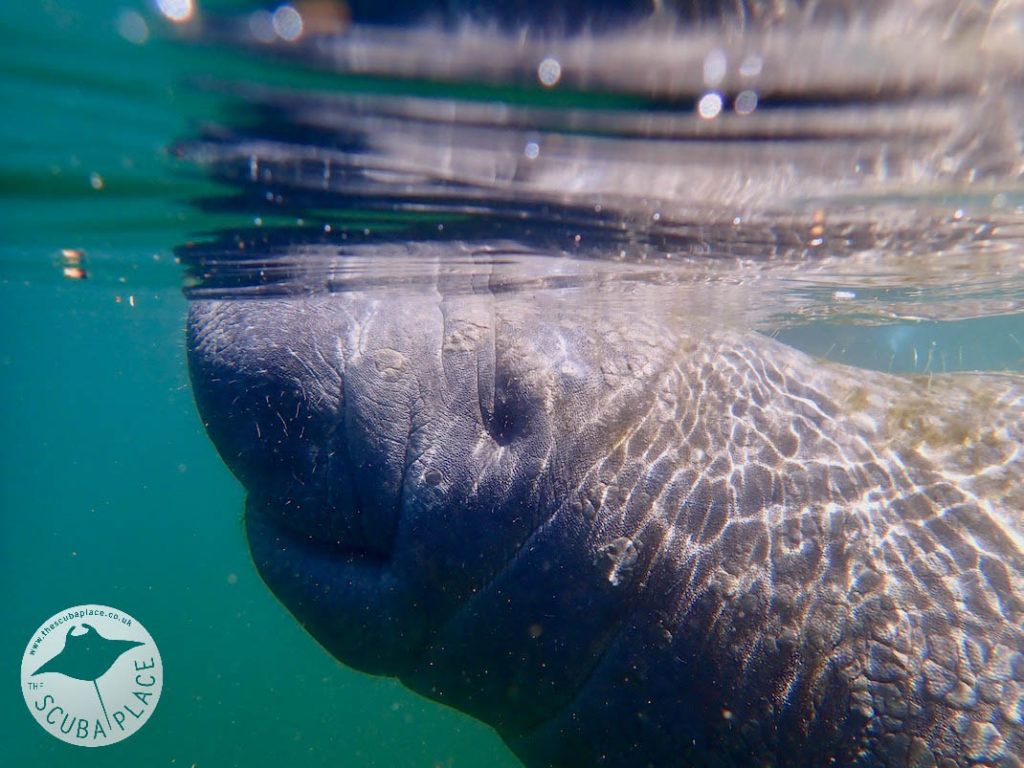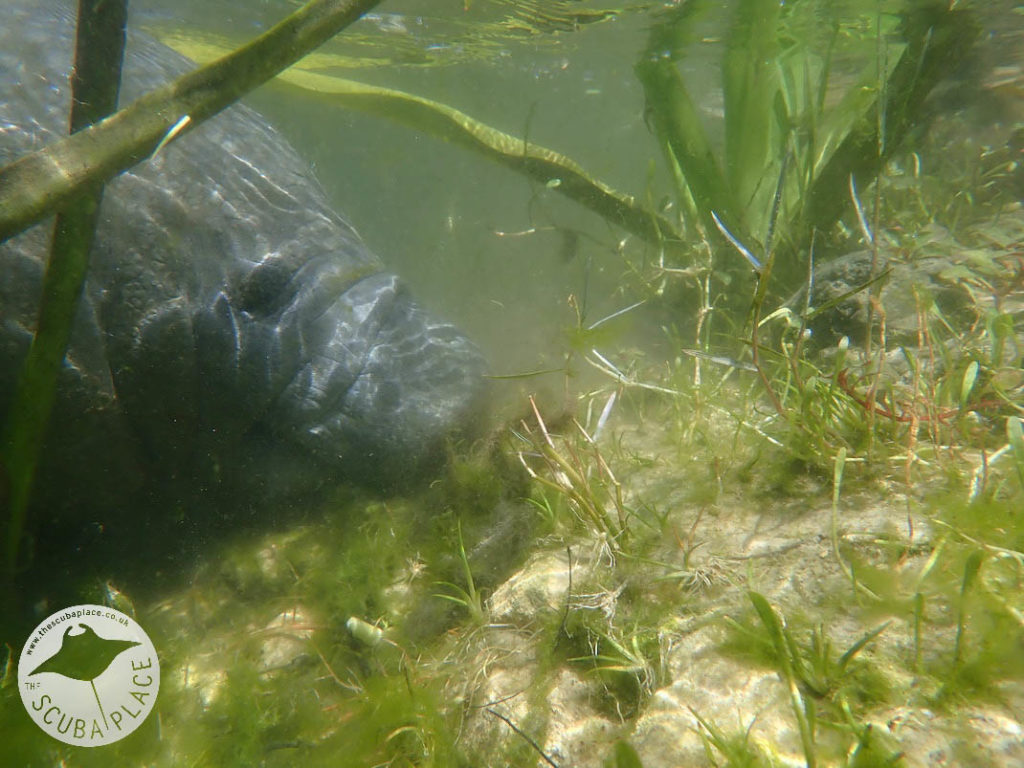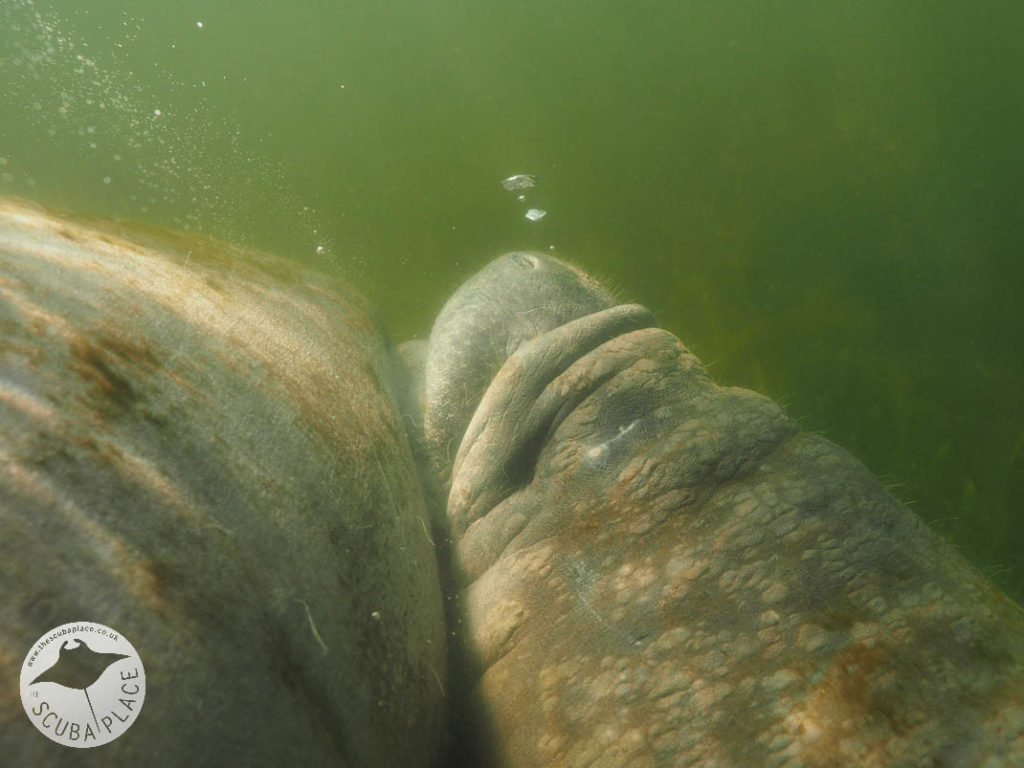During a visit to Florida, we swam with the manatee and learned some interesting facts.
John and I made a trip to the USA this Spring and had the opportunity to check out all that Florida has to offer travelling divers. We’ve seen manatees in various Florida marinas over the years but have never had the opportunity to swim with them so our first stop after visiting family was to Crystal River, just a little over an hour north of Tampa International Airport. Crystal River is one of the few places you can legally swim with manatees in their natural habitat. We booked a 3 hour swim with Fun 2 Dive with a 10:00 am departure. Fun 2 Dive asked us to arrive 15 minutes early to check in and participate in a short educational briefing. We arrived with our camera gear in tow and the staff asked to view a video from the U.S. Fish and Wildlife Service titled “Crystal River Refuge’s ‘Manatee Manners’ for Photographers and Videographers”.
Between November and April every year this area is home to the largest aggregation of manatees in a natural environment. We were there mid-May but were confident we would have an amazing experience! And did we ever! Our guide for the day Dani, is a self proclaimed manatee nerd! She has had a passion for manatees since the age of 13 and loves what she does! Our group of 10 loaded up on the Fun 2 Dive bus and took the short 5 minute trip to the marina. We boarded the pontoon and motored out into the nearby inlet. There were a few other boats in the area and as one boat was moving off they let us know that there were 3 manatees in the area. Armed with our pool noodles, snorkel gear and cameras, we carefully entered the water and were lucky enough to find a mother and baby!
We spent the next few hours with our faces in the water amazed by the encounter. These beautiful yet endangered animals are gentle giants found in inlets, marinas, and coastal shallows. Often bearing numerous scars from boat propellors, these sea-cows are super cute in an ugly way but so much fun to be in the water with! Don’t be fooled by their size and slowness – when they want to move, they can put on a real burst of speed! And while we could have spent all day with them, watching the baby nurse and then munch on some sea grass in just a few inches of water, our time came to an end and we loaded back up on the boat.
We have to thank Dani for her enthusiasm and endless knowledge of manatees! Here are 10 facts Chloe researched for us that we had to share!
1. Manatees can hold their breath for up to 20 minutes!
Although manatees live in the water, they need to breathe air to survive. Common sense, right? Well, you’ll be surprised to know that manatees don’t use their mouth to breathe. By breathing through their nostrils, they can achieve a higher rate of exchange of air, exchanging about 90% of the air in their lungs, whereas humans only exchange about 10%. This enables a manatee to hold its breath for longer.
2. The oldest manatee in the world died at age 69.
The average lifespan of a manatee is 40 years old. However, Snooty exceeded this! Snooty the manatee from Florida was born in captivity and raised in Bishop Museum of Science and Nature’s Parker Aquarium. Due to hand rearing, Snooty was never released to the wild. Snooty sadly died two days after his 69th birthday, which was actually down to human error. It is thought that Snooty could’ve reached 100 years old!
3. Sea cow? More like Sea Elephant!
It is suggested that manatees have evolved from four-legged land mammals over millions of years. Each species of manatee is a member of the Sirenius family, which shares a common ancestor with the elephant, aardvark and small gopher-like hyrax. The last ancestor they share with elephants lived about 60 million years ago.
4. Man vs Food finds potential new host
An incredibly impressive fact is that a manatee eats around a tenth of its body weight in food each day! Let’s all appreciate that they can weigh up to 450kg and their diet is predominately made up of seagrass, which weighs hardly anything!! Hence why manatees are munching all day, they’ve a job to do! That’ll give any Man vs Food challenge a run for its money. Their diet is a good indicator of an ecosystem’s health. A full up manatee suggests its immediate environment is flourishing.
5. There’s no looking back for a Manatee. Seriously, they can’t turn their heads
As manatees don’t possess the same neck vertebra as humans, they can’t rotate their heads like we can. This means if they want to look back or to the sides, they must move their whole body. What an effort!
6. Manatees have SIX senses
Manatees have tiny hairs distributed sparsely all over their body that are known as vibrissae. Studies have suggested that these tactile body hairs can be just as sensitive as whiskers and can help analyse surroundings underwater and detect vibrations in the water. Having this sixth sense is great help to manatees, as they are not known to have 20:20 vision, particularly at night.
7. Who are you calling fat?
Although they may look fat and blubbery, manatees don’t have a thick layer of fat for insulation; that’s why they prefer warmer waters! So, if it’s not fat, what is it? Well, the reason for their size is due to their stomach and intestines taking up a lot of space.
8. Dentist? No thanks!
Manatees’ teeth often get worn down through their relentless chewing and munching but this doesn’t cause concern. Manatees grow and lose teeth throughout their entire lives, just like elephants. Older teeth fall out at the front whilst new teeth grow through at the back of their mouths.
9. Causes of death
This is not such a fun fact. Whilst manatees do not have any natural predators in the wild, humans have had a large part of putting this species at risk of extinction. According to the United States Fishing and Wildlife Services, around 99 manatee deaths each year are related to human activities, especially boat injuries. Manatees are protected by the Marine Mammal Protection Act of 1972, the Endangered Species Act of 1973, and the Florida Manatee Sanctuary Act of 1978 to help lower this number.
10. Pregnancy Glow
Once female manatees reach the age of 5, they are ready to mate. It’s almost twice as long for males, taking a further 4 years to be ready. Take your time guys! Once pregnant, the gestation period for a manatee can be between 11 and 12 months. Manatees typically only have on calf per pregnancy, although rare, twins have been born too. Once born, a calf can weigh up to a whopping 32kg and will stay with its mother for around 2 years. One last bizarre fact we found out whilst on our trip, is that the mothers’ teats are found on the joint of the flippers.
Would you like to swim with the manatee? Dive the Florida coasts? Spend the day with Mickey Mouse? The Scuba Place can arrange a custom trip for you!! Let us put together a Fly-Drive-Dive holiday that ticks all the boxes!
Keep your eyes on this space as we headed over to the East coast of Florida to dive Key Largo, West Palm Beach and Jupiter and we’ve got stories to share!!! Come Dive with Us!




